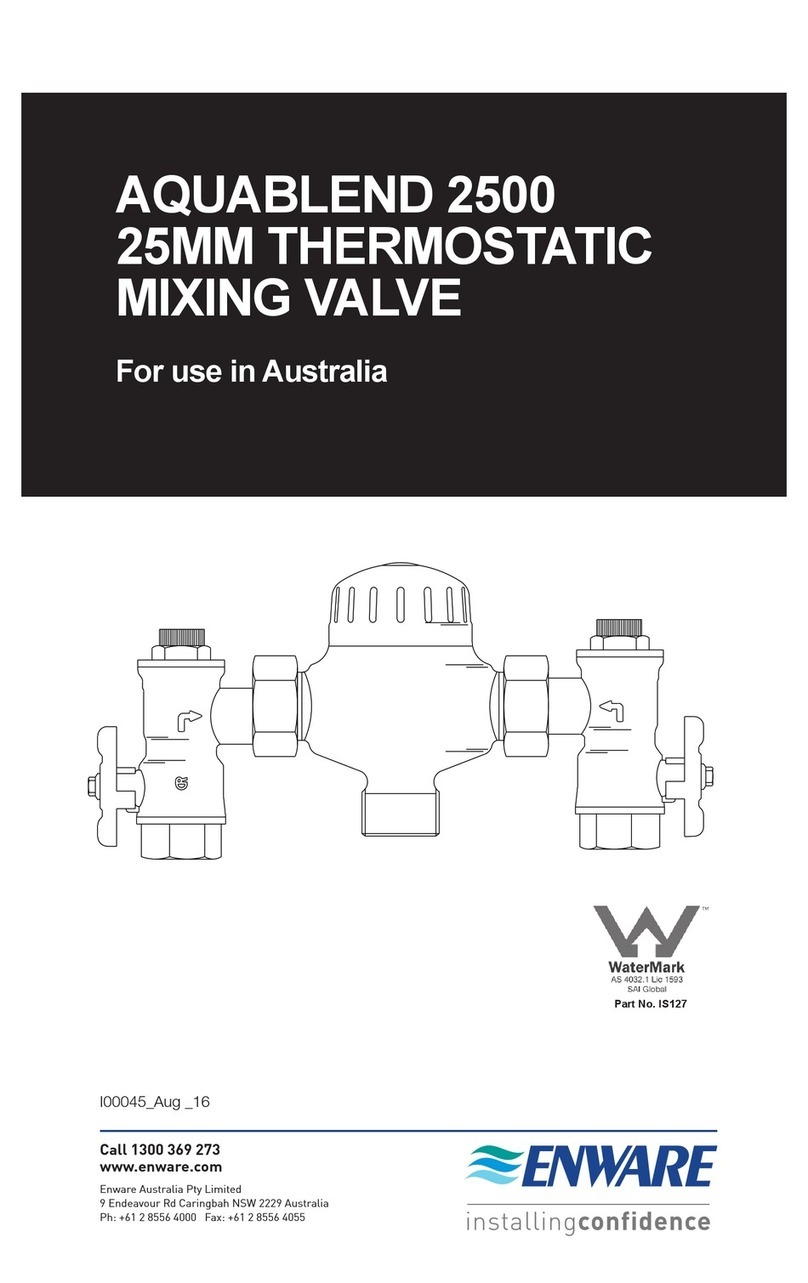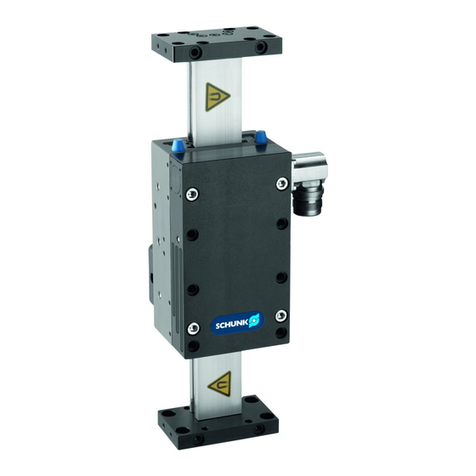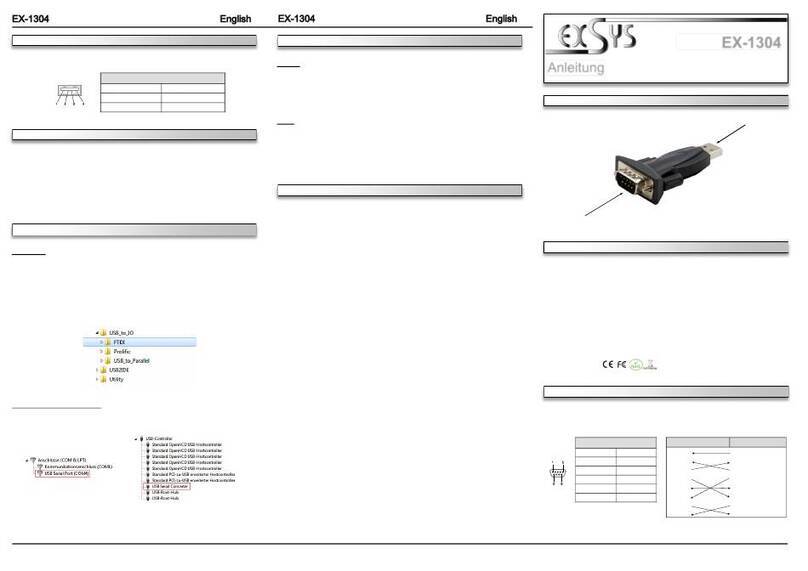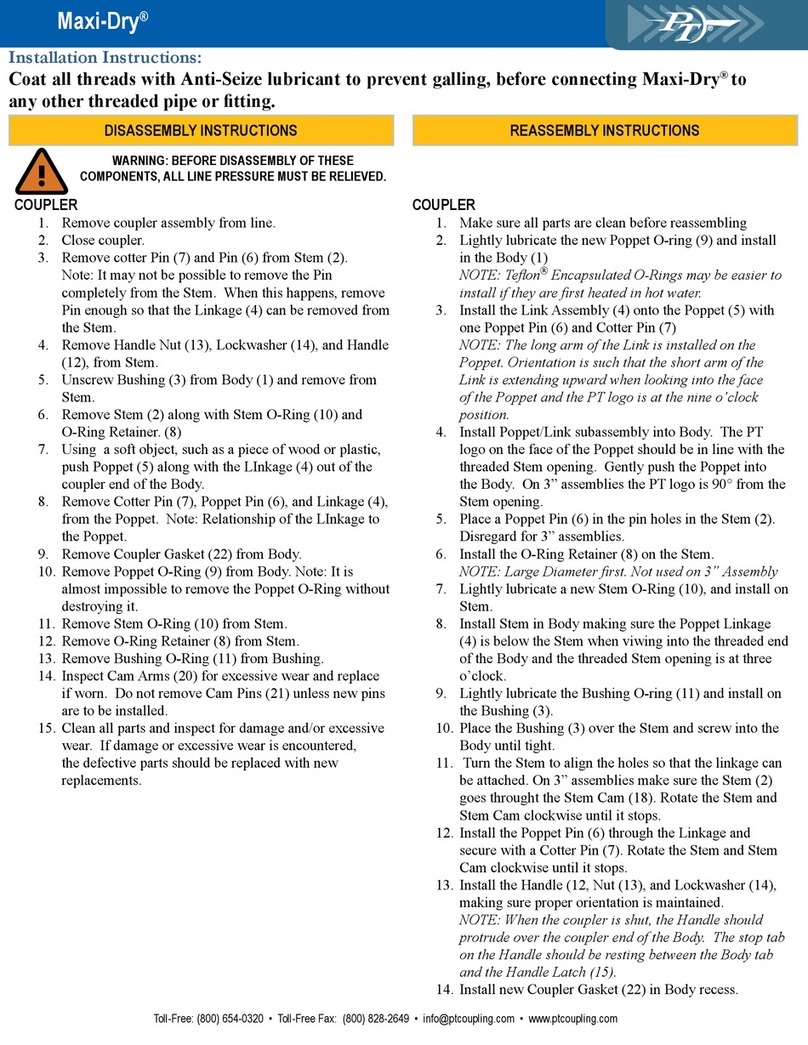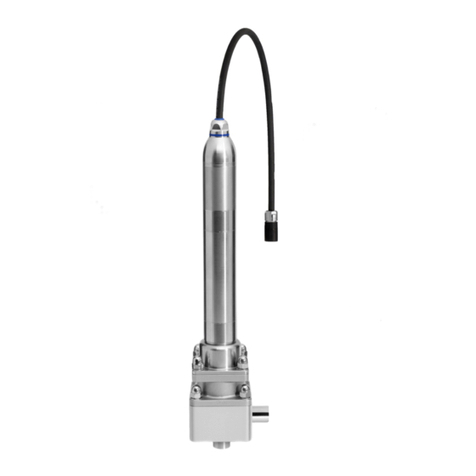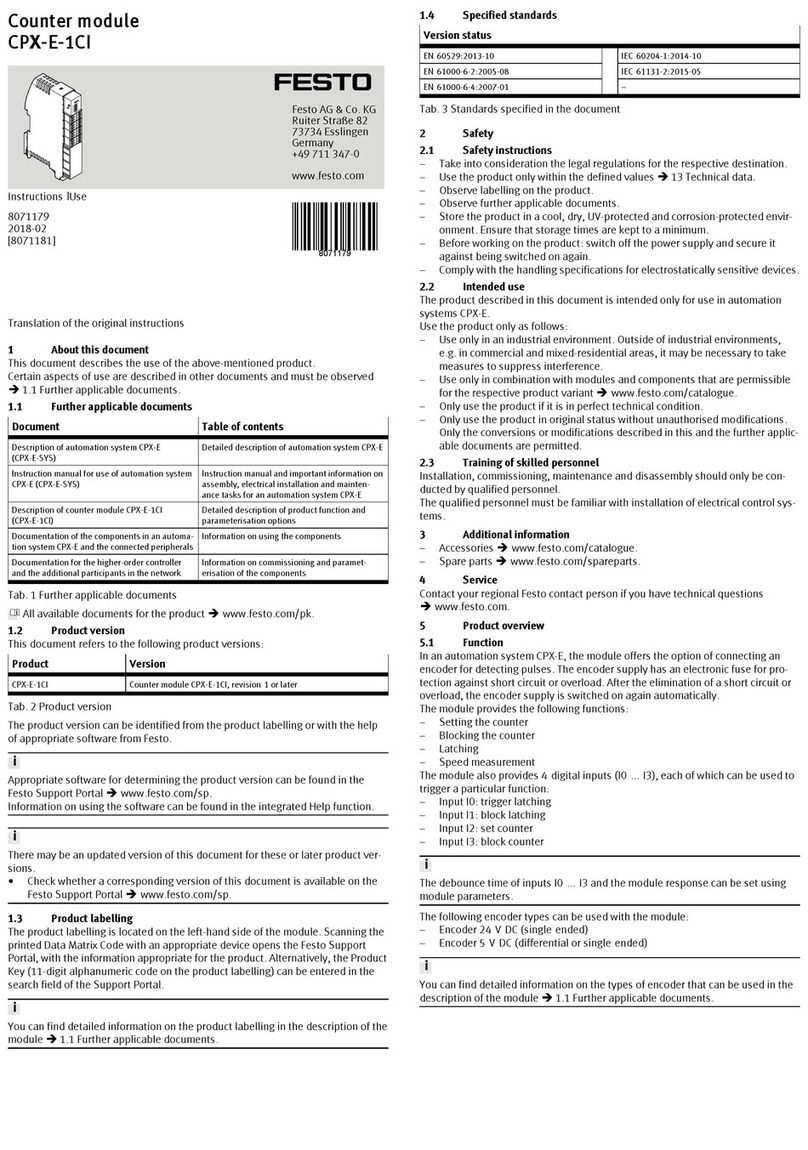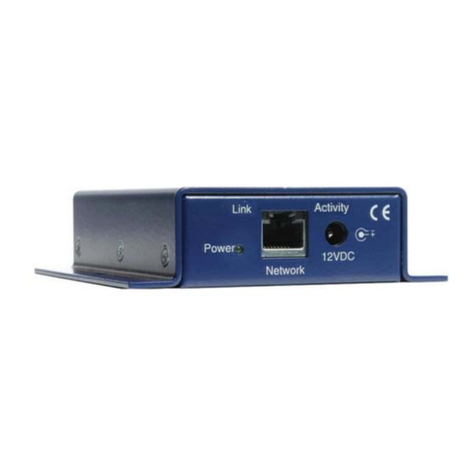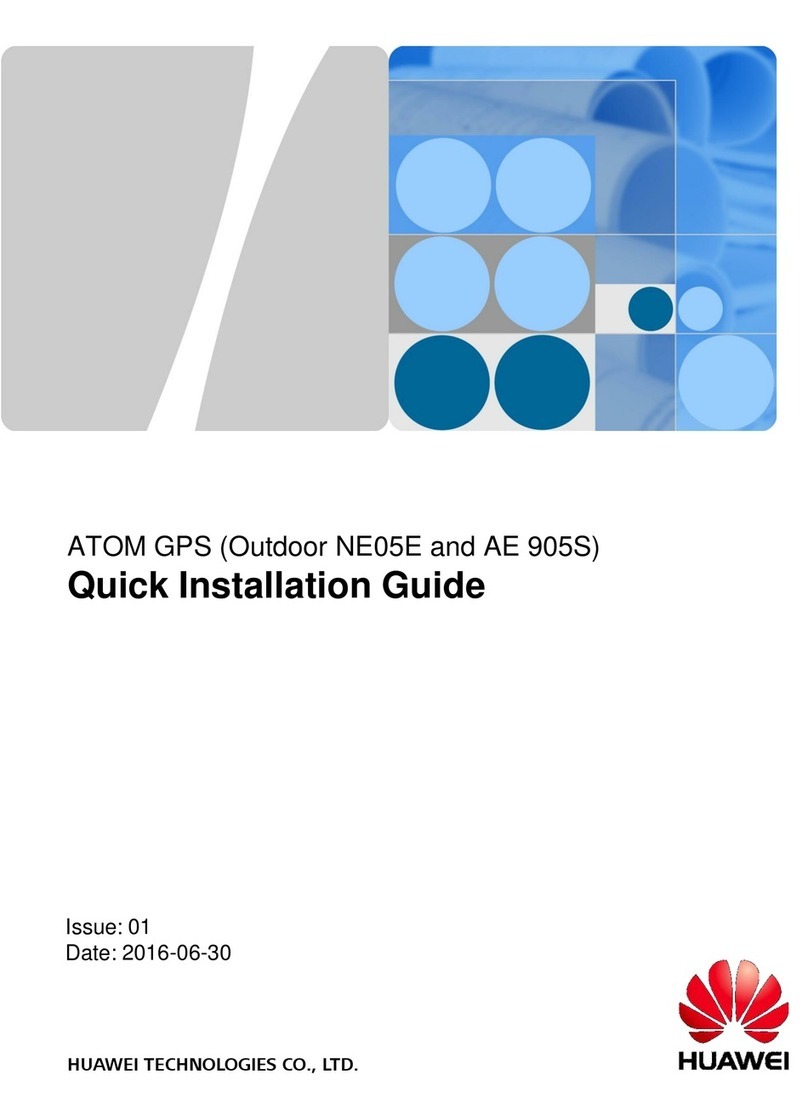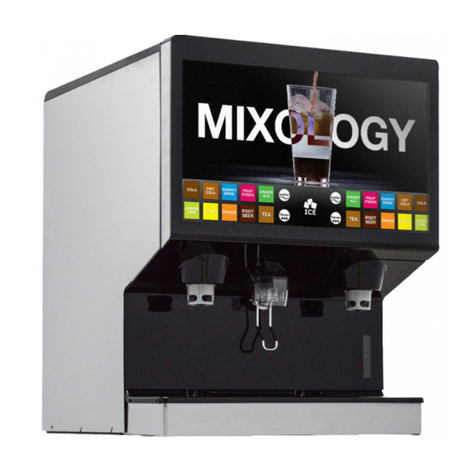enware Aquablend 1500 User manual

Installation Instructions
FOR USE IN AUSTRALIA
15MM THERMOSTATIC MIXING VALVE
Call 1300 369 273
www.enware.com
Enware Australia Pty Limited
9 Endeavour Rd Caringbah NSW 2229 Australia
Ph: +61 2 8556 4000 info@enware.com.au
AQUABLEND 1500
THERMOSTATIC
MIXING VALVE
WITH THERMAL FLUSH
I00103_Jul 18
NEW AQUABLEND 1500
FAQ and technical info available at
www.enware.com.au/1500info
I00105 VC463
IS123

2 Call 1300 369 273 www.enware.com.au
THIS PAGE HAS INTENTIONALLY BEEN LEFT BLANK

www.enware.com.au Call 1300 369 273 3
PRODUCT FEATURES
Complies with the
requirements of AS4032
- Thermostatic Mixing
Valves
Provides high stability
of mixed water
temperature even
under changing inlet
conditions
Ensures rapid shut
down of mixed outlet
ow in the event of hot
or cold water supply
failure
Designed for quick and
simple in-situ servicing
Suitable for installation
into AS3500 compliant
systems with hot water
temperature as low as
55°C
Fitted with a Tamper
Resistant temperature
adjustment mechanism
Built-in Thermal Flush
feature allows controlled
thermal ush to the
TMV and warm water
plumbing system
Enware reserves the right to change any product specification or information
contained in this publication, at any time and without notice. Every care has
been taken to ensure accuracy in the preparation of this publication
which has been issued for guidance only. No liability can be accepted for any
consequences which may arise as a result of its application.
Enware is a trade mark of Enware Australia Pty Limited - A.C.N. 003 988 314
Aquablend TMV’s are exclusively manufactured for Enware Australia Pty Limited
by Reliance Worldwide 27-28 Chapman Place, Eagle Farm, Qld, 4009 Australia.
The ENWARE AQUABLEND
1500 THERMOSTATIC MIXING
VALVE is a high performance
Thermostatic Mixing Valve
suitable for a wide range
of applications. The valve
is designed to comply with
AS4032 - Thermostatic
Mixing Valves.
AQUABLEND 1500 THERMOSTATIC MIXING VALVE

4 Call 1300 369 273 www.enware.com.au
THIS PAGE HAS INTENTIONALLY BEEN LEFT BLANK

www.enware.com.au Call 1300 369 273 5
CONTENTS
SAFETY page 6
PRODUCT DESCRIPTION page 7
RECOMMENDED PRESSURES
AND TEMPERATURES page 10
FLOW SIZING GRAPH page 11
INSTALLATION page 12
COMMISSIONING OF THE VALVE page 15
MAINTENANCE & SERVICING page 18
THERMAL FLUSH page 20
TROUBLE SHOOTING page 22
SPARE PARTS page 24
COMMISSIONING REPORT page 25
SERVICING REPORT page 28
WARRANTY page 30
AQUABLEND 1500 THERMOSTATIC MIXING VALVE

6 Call 1300 369 273 www.enware.com.au
SAFETY
The ENWARE AQUABLEND 1500 Thermostatic Mixing Valve
is a high performance valve designed to give stable and
dependable operation, provided it is installed, commissioned,
operated and maintained as per the recommendations
outlined in this manual. It should be noted however that this
valve should not be considered as an alternative to adequate
supervision and duty of care during its use and operation.
Note: When installed, the mixing valve, inlet controls, pipework
and the surrounding area may become hot, which may cause
burn injuries. Precautions should be taken to ensure that these
surfaces cannot cause such injuries.

www.enware.com.au Call 1300 369 273 7
PRODUCT DESCRIPTION
The ENWARE AQUABLEND 1500 Thermostatic Mixing Valve
is available complete with inlet service ttings. The inlet to
the ttings is ½” BSP male, and the outlet from the valve is
½” BSP male adapter with an optional ¾” BSP male adaptor.
The service ttings consist of isolating ball valves, strainers,
pressure test points and non-return valves. The strainers can
be serviced and cleaned without disturbing the installation
(refer to Maintenance and Servicing section). The inlet service
ttings also incorporate union type ttings enabling the
thermostatic mixing valve to be removed from its installation
without disturbing its pipework.
AQUABLEND 1500
Enware Product Code ATM700
Outlet Size 1” with 1/2" and 3/4" BSP adaptors
Inlet 1/2" BSP male with compression nuts
Dry Weight 2 kg
Finish Nickel Plated
160
80
225
125
1” BSP (½” & ¾” BSP
ADAPTORS SUPPLIED)
1/2" BSP
IMAGE 1

8 Call 1300 369 273 www.enware.com.au
PRODUCT DESCRIPTION
Method of operation is illustrated in IMAGE 2 below:
Hot and cold water is supplied to each side of the valve
respectively. The hot water enters through a port below the
Piston, the cold water enters above the Piston. Upon entry
the water begins to blend and enters the Mixing Tube. At
this point the mixed water contacts the thermostatic wax
Element. The Element will extend or contract to match the
water temperature it is exposed to causing the Piston to move,
thereby regulating the amounts of hot and cold water entering
the valve. This thermostatic mechanism maintains the mixed
water temperature at a constant temperature.
IMAGE 2 - GENERAL ARRANGEMENT DRAWING

www.enware.com.au Call 1300 369 273 9
PRODUCT DESCRIPTION
If, for example the inlet hot pressure dropped, the ow of
hot water into the valve would be reduced and the valve
would react as per the following sequence of events:
• Element is exposed to mixed water at a reduced
temperature
• Thermostatic Element contracting
• Piston is pushed upwards by the return spring restricting
cold ow, consequently opening more of hot port.
• Valve attempts to restore itself to original temperature
setting.
Similarly if the hot inlet temperature dropped, the element
would again see blended water at a lower temperature and
therefore the Element would again contract reducing the
cold port piston gap and hence supply more hot water and
less cold. Once again the valve attempts to restore itself to
its original setting. This will occur for all changing conditions
including changes to ow rate, inlet temperatures and inlet
pressures.
In the event of a sudden loss of the cold water supply the
Piston will shut off the hot port thus stopping any ow through
the valve. The valve will also shut down the cold supply if there
is a hot water failure.

10 Call 1300 369 273 www.enware.com.au
RECOMMENDED PRESSURES
& TEMPERATURES
MIXED OUTLET TEMPERATURE
Temperature Adjustment Range 35-48°C
INLET TEMPERATURES
Cold Supply Minimum 5°C
Maximum 30°C
Hot Supply Minimum 55°C
Maximum 90°C
Hot to Mix Temperatures Differential for
Stable Operation Minimum 10°C
Cold to Mix Temperatures Differential
for Stable Operation Minimum 5°C
FLOW RATES - TO ENSURE STABLE CONDITIONS SEE IMAGE 3
Minimum 4 litres/minute as per ow sizing graph
Maximum 39 litres/min @ 300kPA Pressure loss as per ow
sizing graph
DYNAMIC INLET PRESSURES
Hot & Cold Inlet Pressures Minimum 20kPa
Maximum 500kPa
STATIC INLET PRESSURES
Hot & Cold Inlet Pressures Maximum 1600kPa
INLET PRESSURE RATIO
H - PL = H¹
C - PL = C¹
H¹ : C¹ = Max 10:1
C¹ : H¹ = Max 10:1
H = Hot inlet pressure
C = Cold inlet pressure
PL = Pressure Loss
NOTE: For optimum operation it is recommended that the hot
& cold water supply pressures be balanced to within +/- 10%.
Notwithstanding the above, compliance with AS3500 must be
maintained.

www.enware.com.au Call 1300 369 273 11
HEADLOSS CHARACTERISTICS OF AQUABLEND 1500
NOTE: To ensure optimum performance the minimum
outlet ow of the mixing valve during operation should be at
least 4 litres/minute.
It is important that the valve is sized such that the ow
rates from the outlets are not less than those listed in
AS3500.1.Section 3. The pipework between the valve and the
system must be sized in accordance with AS3500.1 Section 3
and Appendix C to ensure the water velocity in the pipework is
within the allowed limit.
If the valve is to be installed and operated under unequal
inlet pressures the lower inlet pressure determines the outlet
ow rate. However, for optimum performance and stability
it is recommended that the valve be installed with balanced
dynamic inlet pressures (+/- 10%).
FLOW SIZING GRAPH
The ENWARE AQUABLEND 1500 Thermostatic Mixing Valve
is suitable for many applications.
The Headloss Characteristic for Mixed Outlet Flowrate
versus Balanced Inlet Pressure is shown below in IMAGE 3.
It is important that the valve is not oversized for its intended
application.
IMAGE 3 - Headloss Characteristics

12 Call 1300 369 273 www.enware.com.au
INSTALLATION
The ENWARE AQUABLEND 1500 Thermostatic Mixing Valve
should be installed using the appropriate Standard, Code of
Practice and legislation applicable to each state and following
the details outlined in this section.
The ENWARE AQUABLEND 1500 must be installed by a
licensed plumber, or where applicable, a licensed plumber who
has undertaken TAFE training in Thermostatic Mixing Valves.
NOTE: To effectively control microbial hazards
during system design, installation, commissioning and
maintenance, the requirements outlined in AS/NZS3666 and
local legislation shall be adhered to.
Inlets and outlet connections of the valve are clearly marked.
The letters H and C cast into the valve body indicates the Hot
and Cold Inlet respectively. An arrow cast into the body of the
valve identies the valve outlet direction.
If the valve is not installed correctly then it will not function
correctly and may put the user in danger. It may also void the
warranty of the valve.
Prior to the installation of the valve, the system must be
checked to ensure that the system operating conditions fall
within the recommended operating range of the AQUABLEND
1500 Thermostatic Mixing Valve as detailed on page 10 -
recommended temps & pressures.
If the hot water supply temperature is greater
than 90°C the valve may be damaged. A suitable
temperature limiting valve must be tted to the hot water
supply, prior to the inlet ttings, if the temperature of the
hot water will rise above 90°C. This temperature limiting
valve must be installed as per the manufacturer’s instructions.
Alternatively, use AQUABLEND 1500 SOLAR - Code ATM715.
It is also important that both of the inlet dynamic
supply pressures are 500kPa or less. If either
supply pressure exceeds 500kPa then a suitable pressure
reducing valve must be tted prior to the inlet control
valve to reduce the pressure to an acceptable limit.

www.enware.com.au Call 1300 369 273 13
INSTALLATION
These pressure reducing valves must be installed as per the
manufacturer’s instructions. For optimum performance from the
valve it is recommended that the inlet pressures are balanced
to within 10% of each other.
The water quality conditions should be checked to ensure they
do not exceed the limits as listed in AS3500.4, Section1.6. If
they do exceed the limits it will be necessary to install a water
softener or water treatment device.
NOTE: In some installations where certain types of faucet
devices such as ick mixers and solenoid valves are used,
the water pressure may be seen to spike outside that
recommended for the valve during rapid shut off conditions
created by these types of devices. Even if the spike only
lasts a split second it is still considered to be outside the
operating conditions, and may cause the valve to operate
incorrectly. In the event that this does occur, measures must
be taken to control the spike, such as an inline pressure
reducing valves directly before the valve inlets.
To ensure that the mixing valve operates correctly it is
necessary that the pipework is thoroughly ushed with
clean water before the valve is installed. This will remove
any physical contaminants from the pipework, ensuring
trouble-free operation. During the ushing procedure care
should be taken to prevent water damage occurring to the
surrounding area.
It is required by AS3500.4 Section 3.3 that “Each thermostatic
mixing valve shall have an isolating stop tap/valve, line strainer
and non-return valve tted to the hot and cold water supply
lines”. The inlet ttings supplied with each TMV will ensure this
requirement is met.
If the ENWARE AQUABLEND 1500 Thermostatic Mixing Valve
is to be installed without supplied inlet control valves then it will
be necessary to install a separate isolating valve, non-return
valve and strainer to both inlets to the valve.
SEE IMAGE 4 on following page.

14 Call 1300 369 273 www.enware.com.au
INSTALLATION
Strainers must be tted to prevent any particulate
contamination from entering the valve. These strainers should
be 60 Mesh stainless steel. Isolating valves are required
so that the water supply to the valve can be isolated in the
event that servicing is required. Non-return devices must
also be tted to both the hot and cold inlets to prevent cross-
connection. SEE IMAGE 4
Ensure that test plugs in the top of the inlet ttings are tight.
The valve should be installed so it can be accessed easily
for maintenance or servicing. The valve can be installed in a
wall cavity, under a basin or on a wall, however it is essential
that the mixing valve and inlet ttings are easily accessible for
servicing.
During installation or servicing heat must not
be applied near the mixing valve or inlet ttings,
as this will damage the valve and inlet tting
internals. Failure to comply with this requirement will
damage the valve and ttings. It will put the user at risk,
and it will void the warranty of the valve.
IMAGE 4 - Schematic Installation Diagram

www.enware.com.au Call 1300 369 273 15
COMMISSIONING OF THE VALVE
Upon completion of the installation, the valve should be
tested & commissioned as per the procedure outlined below
or as specied by the local authority. The entire procedure
should be read through thoroughly prior to the commissioning
of the valve. A calibrated digital thermometer having rapid
response time with maximum temperature hold, a small at
bladed screwdriver and the adjusting key (supplied with the
AQUABLEND 1500) will be required to check & set the outlet
mixed temperature of the valve.
Ensure all outlets that will be serviced by the valve have
adequate warning signs posted to ensure that no outlet is used
during commissioning.
Open the cold supply line to the valve, then open the hot
supply line, ensuring there are no leaks.
Open the outlet that is serviced by the shortest length of pipe
work between the mixing valve and outlet xture.
Allow the mixed outlet to ow for at least 60 seconds to allow
the temperature to stabilise before taking a temperature
reading at the outlet with a digital thermometer. The ow
rate should be at least 4L/min. The ow rate can be checked
with the aid of a known size container and a stopwatch. The
temperature should be taken at the closest outlet served by
the thermostatic mixing valve.
If the outlet temperature requires adjustment please follow
steps below.
TEMPERATURE ADJUSTMENT
1. Using a small at bladed screw driver, lever the Red Lock
Shield (protective cover) off the valve. SEE IMAGE 5
(over page)
2. Loosen the temperature adjustment locking grub screw
located on the Hex of the top cap using 2mm Allen Key.
SEE IMAGE 6
If the grub screw is not easily accessible, relocate the grub
screw to the most accessible screw hole (3 screw holes are
provided on the top cap for convenience). Leave the grub
screw loose.

16 Call 1300 369 273 www.enware.com.au
COMMISSIONING OF THE VALVE
3. Fit supplied key over the adjusting spindle. SEE IMAGE 5
• To increase the mixed outlet temperature,
rotate the spindle anti-clockwise.
• To decrease the mixed outlet temperature,
rotate the spindle clockwise
4. Allow the mixed outlet temperature to stabilize for 60 secs
and once again take a temperature reading. Repeat the
procedure until the desired temperature has been reached.
5. Tighten the temperature adjustment locking grub screw.
SEE IMAGE 6
6. Push the top cover rmly back on to the top of the valve
until it ‘snaps’ back into place.
7. Check the outlet temperature is stable over the full range of
ow rates and that ow rate is adequate for the application.
8. Close the outlet.
9. The mixing valve is now set and locked.
IMAGE 5
IMAGE 6

www.enware.com.au Call 1300 369 273 17
COMMISSIONING OF THE VALVE
SHUT DOWN TEST
Now that the mixing valve has been set and locked it is
necessary to perform a shut down check. Allow the mixed
water temperature to stabilise and note the outlet temperature.
While holding a digital thermometer in the outlet ow, quickly
isolate the cold water supply to the valve. The outlet ow
should quickly cease owing. As a rule of thumb the ow
should be less than 0.1L/min following the isolation. Monitor
the maximum outlet ow temperature, and record this on the
Commissioning Report. The temperature should not exceed
that allowed by the applicable standard or code of practice for
each state. Restore the cold water supply to the valve. After
the mixed water temperature has stabilised note the outlet
temperature ensuring the outlet temperature has
re-established.
Repeat the above test, except this time quickly isolate
the hot water supply to the valve. The outlet ow should
quickly slow to a trickle. As a rule of thumb the trickle should
typically be less than 0.4L/min@500kPa down to less than
0.1L/min@100kPa following the isolation. Restore the hot
water supply to the valve. After the mixed water temperature
has stabilised, measure and record the outlet temperature,
ensuring the outlet temperature has re established.
Ensure that all details of the Commissioning Report are
completed & signed by the relevant signatories & a copy is
kept with the installer and owner of the premises.
The valve is now commissioned and it can be used within
the technical limits of operation.

18 Call 1300 369 273 www.enware.com.au
MAINTENANCE AND SERVICING
The ENWARE AQUABLEND 1500 Thermostatic Mixing Valve
will only require minimal preventative maintenance work to
ensure it operates at its optimum level of performance. The
valve should be commissioned and serviced annually, unless
the installed conditions dictate more frequent servicing is
necessary.
ANNUAL MAINTENANCE PROCEDURE
Every 12 months the ENWARE AQUABLEND 1500 should be
inspected & tested. The valve’s external surfaces should be
given a light wipedown. The valve & surrounding area should
be inspected for leaks or water damage and action taken if
required. Ensure a clean dry work area is available.
Cleaning the Strainers
Firstly isolate the hot and cold supplies to the mixing valve by
closing the inlet ball valves. With a suitable spanner remove
inlet tting top cover then remove mesh strainer SEE IMAGE 7
Clean strainers with a suitable descaling solvent (such as
CLR) diluted with water. Check for physical damage and
thoroughly rinse with clean water. Strainers can then be re-
installed into the valve and top cover replaced and tightened to
a maximum torque of 15Nm into the inlet valve bodies.
IMAGE 7

www.enware.com.au Call 1300 369 273 19
Non-Return Valve Operation
To check Non-Return Valve on the HOT inlet side,
carry out the following steps:
1. Turn OFF the isolation tap on the HOT inlet only
(COLD inlet must be open)
2. Open Test Port Cap on the HOT inlet side
3. Observe water level in the HOT inlet side test port.
4. If there is a rising water level this may indicate a fouled or
faulty Non-Return Valve. If this is the case, inspect the non-
return valve for damage or any debris, and replace Non-
Return Valve if required.
6. Replace the test port cap on HOT inlet side ensuring it is
tightly secured.
7. Turn back ON the isolation tap on the HOT inlet.
8. To check Non-Return Valve on the COLD inlet side, repeat
steps above using the COLD inlet side.
Check that the test plug in the top of the inlet ttings are tight,
and that there is no evidence of water leakage.
The valve must then be recommissioned as per page 15,
including temperature adjustment and the shut down test.
If the valve fails to shut down or fails to maintain its set
temperature, refer to the troubleshooting solutions outlined on
page 22.
The valve piston ‘O’ ring and thermostatic element/piston
assembly must be replaced at intervals not exceeding 5 years.

20 Call 1300 369 273 www.enware.com.au
THERMAL FLUSH OPTION
The ENWARE AQUABLEND 1500 includes a built-in Thermal
Flush feature allowing the facilities maintenance team or
licensed service contactors to perform a controlled thermal
ush to the TMV and warm water plumbing system.
NOTE: The thermal ush procedure is optional and does
not form part of commissioning and service requirements
set out in AS4032.3
Before commencing the thermal ush, a site-specic
procedure must be implemented to control the risk of
scalding. Hot water will run directly to the outlets fed by the
Thermostatic Mixing Valve, and precautions shall be taken to
prevent the chance of injury.
1. Isolate both hot and cold inlet valves to the TMV.
2. Remove the TMV’s Red Lock Shield (protective cover).
3. Check that the temperature adjustment locking grub screw
(located on the hex of the top cap) is tight (see IMAGE 6).
4. Insert a 3mm Allen key into
the Thermal ush activation
point located in the centre of
the temperature adjustment
screw on the valve’s top cap.
5. Wind Thermal activation
screw anti-clockwise until it
stops. A red indicator will be
visible.
6. Turn the hot water TMV
inlet valve to the on
position.
7. Turn the tapware outlet to the on position
Note: full temperature hot water will ow from the
tapware. Care must be taken to prevent scalding
8. Once the required time set in the facility’s Thermal Flush
procedure has passed, turn the hot water TMV inlet valve to
the off position.
IMAGE 8
Table of contents
Other enware Control Unit manuals
Popular Control Unit manuals by other brands
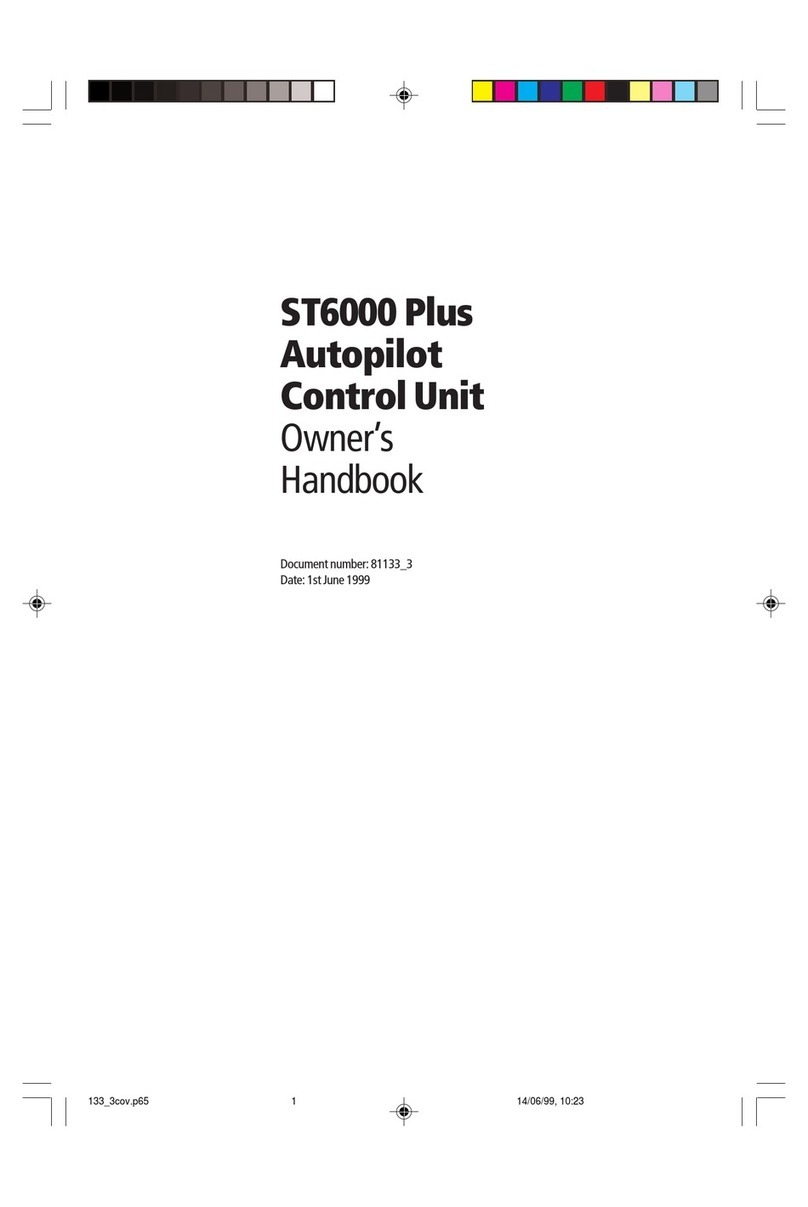
Raytheon Electronics
Raytheon Electronics ST6000 Plus Owner's handbook

ABB
ABB Relion 615 series List manual

Homematic IP
Homematic IP HmIP-MOD-TM quick start guide
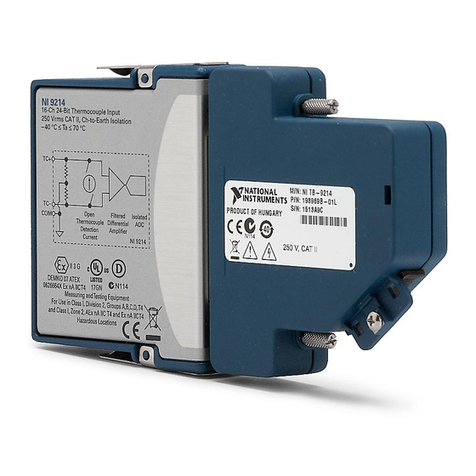
National Instruments
National Instruments NI 9214 Operating instructions and specifications
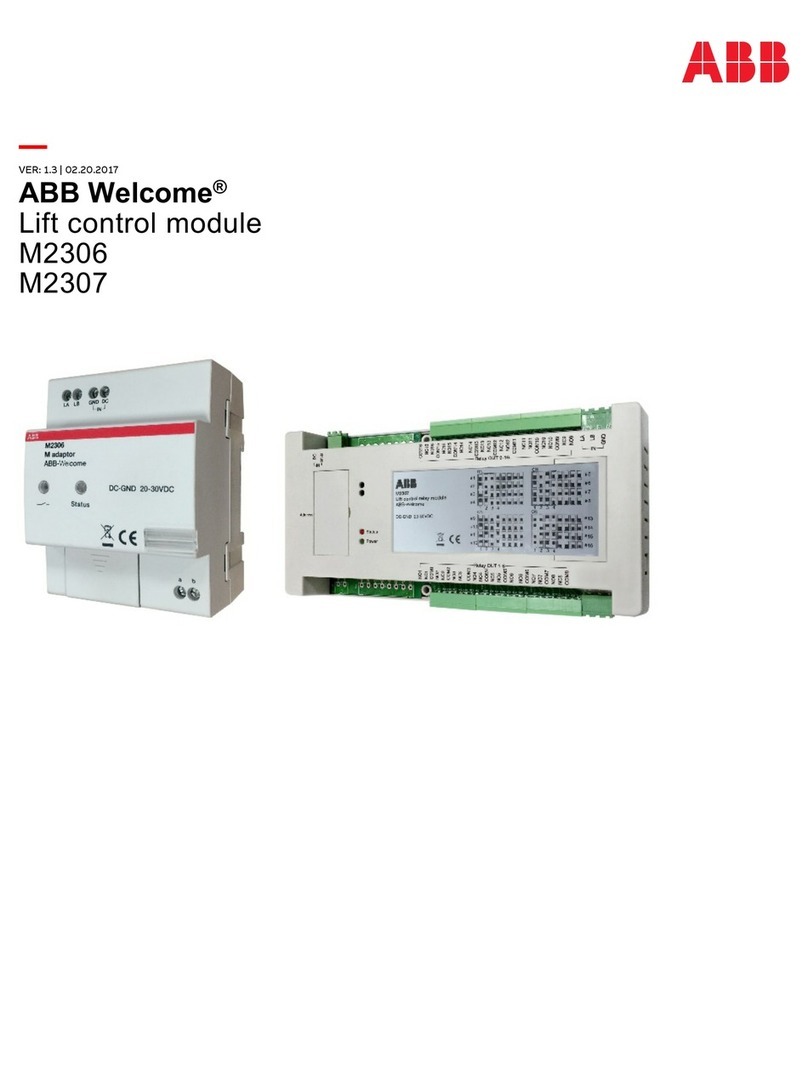
ABB
ABB Welcome M2307 Online manual

Sony
Sony MSU-900 Operation manual
